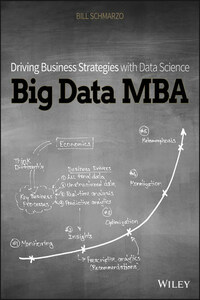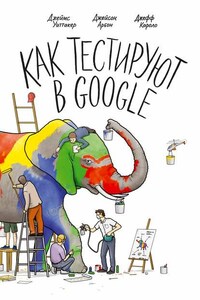I never planned on writing a second book. Heck, I thought writing one book was enough to check this item off my bucket list. But so much has changed since I wrote my first book that I felt compelled to continue to explore this once-in-a-lifetime opportunity for organizations to leverage data and analytics to transform their business models. And I'm not just talking the “make me more money” part of businesses. Big data can drive significant “improve the quality of life” value in areas such as education, poverty, parole rehabilitation, health care, safety, and crime reduction.
My first book targeted the Information Technology (IT) audience. However, I soon realized that the biggest winner in this big data land grab was the business. So this book targets the business audience and is based on a few key premises:
• Organizations do not need a big data strategy as much as they need a business strategy that incorporates big data.
• The days when business leaders could turn analytics over to IT are over; tomorrow's business leaders must embrace analytics as a business discipline in the same vein as accounting, finance, management science, and marketing.
• The key to data monetization and business transformation lies in unleashing the organization's creative thinking; we have got to get the business users to “think like a data scientist.”
• Finally, the business potential of big data is only limited by the creative thinking of the business users.
I've also had the opportunity to teach “Big Data MBA” at the University of San Francisco (USF) School of Management since I wrote the first book. I did well enough that USF made me its first School of Management Fellow. What I experienced while working with these outstanding and creative students and Professor Mouwafac Sidaoui compelled me to undertake the challenge of writing this second book, targeting those students and tomorrow's business leaders.
One of the topics that I hope jumps out in the book is the power of data science. There have been many books written about data science with the goal of helping people to become data scientists. But I felt that something was missing – that instead of trying to create a world of data scientists, we needed to help tomorrow's business leaders think like data scientists.
So that's the focus of this book – to help tomorrow's business leaders integrate data and analytics into their business models and to lead the cultural transformation by unleashing the organization's creative juices by helping the business to “think like a data scientist.”
Overview of the Book and Technology
The days when business stakeholders could relinquish control of data and analytics to IT are over. The business stakeholders must be front and center in championing and monetizing the organization's data collection and analysis efforts. Business leaders need to understand where and how to leverage big data, exploiting the collision of new sources of customer, product, and operational data coupled with data science to optimize key business processes, uncover new monetization opportunities, and create new sources of competitive differentiation. And while it's not realistic to convert your business users into data scientists, it's critical that we teach the business users to think like data scientists so they can collaborate with IT and the data scientists on use case identification, requirements definition, business valuation, and ultimately analytics operationalization.
This book provides a business-hardened framework with supporting methodology and hands-on exercises that not only will help business users to identify where and how to leverage big data for business advantage but will also provide guidelines for operationalizing the analytics, setting up the right organizational structure, and driving the analytic insights throughout the organization's user experience to both customers and frontline employees.
How This Book Is Organized
The book is organized into four sections:
• Part I: Business Potential of Big Data. Part I includes Chapters 1 through 4 and sets the business-centric foundation for the book. Here is where I introduce the Big Data Business Model Maturity Index and frame the big data discussion around the perspective that “organizations do not need a big data strategy as much as they need a business strategy that incorporates big data.”
• Part II: Data Science. Part II includes Chapters 5 through 7 and covers the principle behind data science. These chapters introduce some data science basics and explore the complementary nature of Business Intelligence and data science and how these two disciplines are both complementary and different in the problems that they address.
• Part III: Data Science for Business Stakeholders. Part III includes Chapters 8 through 12 and seeks to teach the business users and business leaders to “think like a data scientist.” This part introduces a methodology and several exercises to reinforce the data science thinking and approach. It has a lot of hands-on work.








